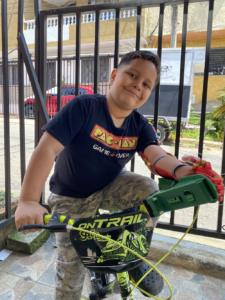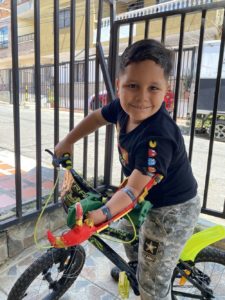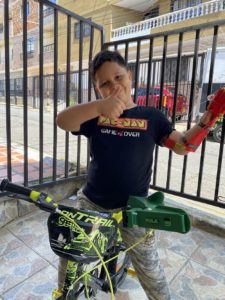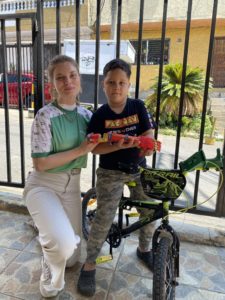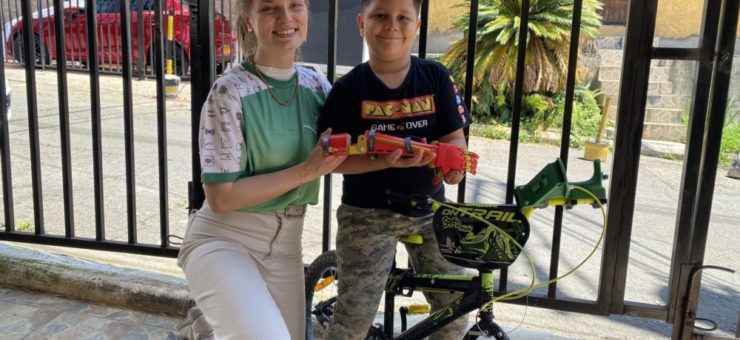Giving the super-powers of an amputee an extra boost
14 June 2023
Elena Guss Tarazona, a consultant engineer at Springboard has been involved in helping the charity with the design and delivery of a solution to help amputees ride a bike. Here, she gives an update on the project.
“We have been working with Humanos3D, a charity based in Colombia dedicated to delivering 3D printed prosthetic limbs and assistive devices to people across the country. A while ago, we designed a device that allows people with bilateral transradial amputations – loss of both arms below the elbow – to ride a bike.
“Being able to ride a bike is a popular request, but the real challenge is in being able to make the bike stop safely. Not only is it fun for children and adults alike, but cycling also affords people a cheap option for transport and exercise. Both in rural and urban areas, a bike can provide someone independence and transport freedom.
“But common body-powered prostheses can’t reliably pull a brake lever with the force needed, so we had to find a different way of activating the brakes. Crucially, this could not also interfere with steering, but still be comfortable and safe to perform in normal use, emergency braking, or cycling up and down hill. Since we are based in Cambridge – arguably the capital of bike riding in the UK – we felt we were the perfect people to tackle this project.
“As with all projects, we started with a requirements capture to make sure we understood the problem and what we expected to achieve with our solution. Next followed a series of interdisciplinary brainstorms to pick the minds or our range of engineers, physicists, and materials scientists – taking these fields into account early in a design helps to avoid re-working solutions further down the line. Since our initial concept generation yielded a plank of wood with a hole drilled through it (more of a works-like than a looks-like prototype at this stage), we then needed some more refined CAD to turn it into a comfortable and functional solution. We got to judge (and improve) the comfort for ourselves during testing on our own bikes outside – all part of the iterative design and testing process.
“On a recent visit to Colombia in May, I visited the Humanos3D office in Medellin to deliver the first device to a little boy called Luciano who wanted to be able to ride his bike, Hulk-style. I spent a day preparing and decorating his device and an Ironman themed prosthetic arm ready for an in-person visit.
“After some last-minute bike repairs, the team got to work fitting the device to Luciano’s bike. The challenge of designing any platform device is that it needs to work in a range of scenarios; in this case, this means differing bike sizes and styles. Since this is the first device to be delivered to a user, it was particularly exciting to be present for the fitting and to see our work in action.
“Given Luciano’s insistence on cycling directly at us when trying out his bike, it was a relief that everything worked as well as it did! We are very proud of how well it met the brief, especially for the first release of a device, although we have identified some opportunities to develop it further for more comfortable use. Luciano was thrilled with his new device, and any discussion of improvements or changes to the design were met with great concern that we would be taking his one away while we made changes.
“Projects like this are a powerful reminder of the impact that modern technology enables us to have on the world. 3D printing has been a game-changer in the world of low-cost assistive devices, allowing for a level of personalisation and cheap, rapid production that now makes these devices available to countless more users. And by connecting experienced designers and engineers to organisations with a local presence, we can magnify the contributions of both groups to deliver high-value assistive devices to those who need them. “
Find out how we can help you with your medical device development.


